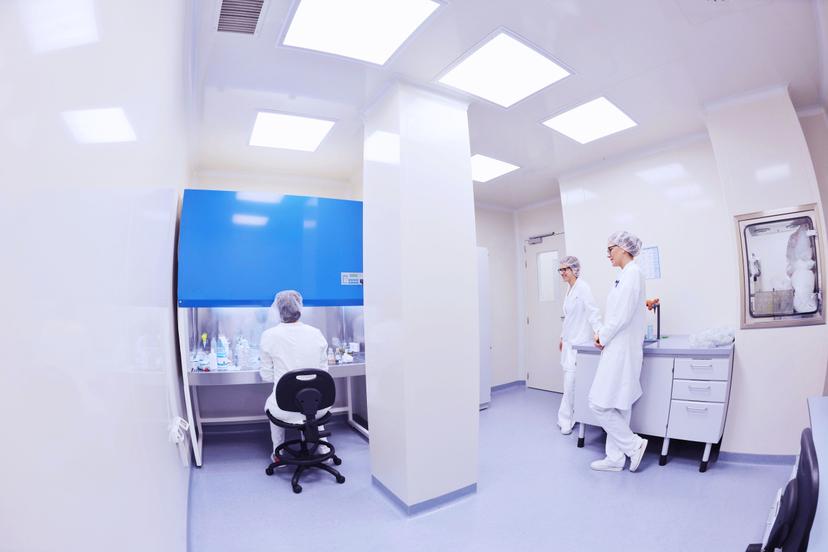Most Downloaded Methods of 2015
Have you downloaded them all?
15 Jan 2016

Have you downloaded them all?
2015 was an exciting year for SelectScience® – we unveiled our brand new website in March and held the hugely successful Scientists’ Choice Awards®, including the first Reviewers’ Choice Award. When it came to scientific research, our scientific community was most interested in improving their technique – becoming pipetting experts and refining their laboratory practice. Read on to find out the 10 most downloaded methods on SelectScience.net in 2015.
10. Tracking Ions from Tap Water to Ultrapure Water
This poster focuses on the removal of ions all along a water purification chain, from tap water to ultrapure water. Download this resource to learn about the efficacy of a water purification chain combining multiple technologies, such as reverse osmosis, electrodeionization and polishing on selected high purification media.
9. Ten Easy Steps for Cleaning a Spill in the Biosafety Cabinet
A spill within the biological safety cabinet can happen to even the most seasoned laboratory user. Taking precautionary measures before and during your work with hazardous materials could help keep you and others safe. Download this white paper for ten simple steps to keep you and your laboratory safe.
Download this application note for a simple and convenient method to minimize evaporation using the Eppendorf 96-Well Cell Culture Plate. The plate offers two options for insulating the wells; a moat surrounding the edge wells and the complete chimney design of the inner wells allow filling of the complete inter-well space with liquid. This results in a more homogeneous distribution of temperature and humidity throughout the plate and reduces the edge effect.
7. Cell Cultivation without Contamination
This white paper compares different contamination control concepts for CO2 incubators from the user’s perspective. Read how BINDER CO2 incubators offer a conclusive concept for contamination avoidance, simplifying routine spray/wipe disinfection and enabling automatic auto-sterilization.
Diquat and paraquat are doubly charged quaternary ammonium herbicides, used extensively worldwide to control both crop and aquatic weeds. Both diquat and paraquat are too polar to be retained by reversed-phase liquid chromatography on C18 columns. Download this application note to learn how UPLC separation using a CORTECS UPLC HILIC Column significantly improved the retention and resolution of both analytes, allowing for detection down to 500 ppt by UV detection alone.
5. Improved Handling of Cells and Protection against Contamination
Although the T-flask is the most widely used vessel for routine maintenance of cell cultures, compared to dishes and plates, the T-flask provides only limited access to the cells due to its narrow neck which makes handling with pipettes and cell scrapers inconvenient. Download this note to learn how Eppendorf Cell Culture Flasks offer some unique benefits combining best protection against contamination with simplified and ergonomic handling.
4. Separation of Proteins and Peptides with Sartobind® Membrane Adsorbers
In this application note, ion exchange chromatography and Sartobind® membrane adsorbers were used to separate protein and peptide mixtures. All samples were prefiltered with a Minisart filter having 0.2 μm or a 0.45 μm pore size.
3. Infographic: How to Become a Pipetting Expert
Reverse pipetting, problem liquids, getting the angle right: Pipetting like a pro can be more complex than it seems. Download this Eppendorf infographic to stay on top of your most difficult pipetting tasks. These tips and tricks will help you to get consistent and reproducible results.
2. Best Practices in Handheld Pipetting
Download this application note to discover best practices in relation to handheld pipetting and maximizing accuracy of dispensing, including the optimization of pipetting performance.
And finally, the most downloaded application note of 2015 was….
1. Good Laboratory Practice - and How It Affects You
Good Laboratory Practice (GLP)-compliant testing in the laboratory can prevent pharmaceutical industry catastrophes, such as the thalidomide scandal in the 1970s, and 2012’s contaminated drugs meningitis outbreak in the USA. This quality assurance system encompasses all organizational structures, and the sequence of analyses and tests for authorization of a medicinal product. Download this white paper for a comprehensive overview of the fundamentals of GLP procedures.
Look out for the latest application notes and methods coming in 2016!
